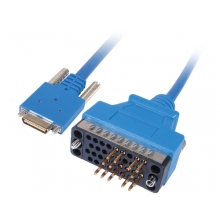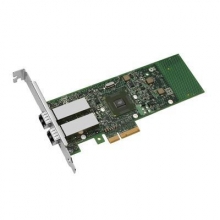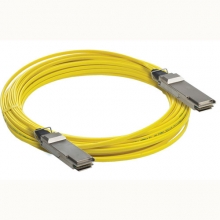- Optical Transceivers
- SFP+ Transceivers
- XENPAK Transceivers
- XFP Transceivers
- X2 Transceivers
- SFP Transceivers
- Compatible SFP
- 3Com SFP
- Alcatel-Lucent SFP
- Allied Telesis SFP
- Avaya SFP
- Brocade SFP
- Cisco SFP
- D-Link SFP
- Dell SFP
- Enterasys SFP
- Extreme SFP
- Force10 SFP
- Foundry SFP
- H3C SFP
- HP SFP
- Huawei SFP
- Intel SFP
- Juniper SFP
- Linksys SFP
- Marconi SFP
- McAfee SFP
- Netgear SFP
- Nortel SFP
- Planet SFP
- Q-logic SFP
- Redback SFP
- SMC SFP
- SUN SFP
- TRENDnet SFP
- ZYXEL SFP
- Other SFP
- FE SFP
- GE SFP
- OC3 SFP
- OC12 SFP
- OC48 SFP
- Copper SFP
- CWDM SFP
- DWDM SFP
- BIDI SFP
- Fiber Channel SFP
- Multi-Rate SFP
- SGMII SFP
- Compatible SFP
- GBIC Transceivers
- Passive Components
- Networking
- Cables
- Equipments
- Tools
- Special Offers


Getting Des Moines traffic signals in sync a priority
The recent climb in gas prices has aggravated an already frustrating predicament for many motorists: waiting at a red light with an engine idling, wasting time and fuel.
It’s a topic that strikes a nerve with Susan Judkins Josten of Clive, who thinks Des Moines-area traffic engineers can do better at coordinating traffic signals. She recalls standing at night on an upper floor of the towering 801 Grand building in Des Moines, watching cars below crawling from one stoplight to the next between East Village and downtown.
“The traffic was very clearly clogged. It just wasn’t moving at all,” said Josten, a former official with the Iowa League of Cities and now a Democratic candidate for a seat in the Iowa House of Representatives.
City and suburban traffic engineers say motorists shouldn’t have to wait longer than 90 seconds to a maximum of two minutes for a green light at Des Moines area intersections.
But they also acknowledge that commuters waiting at a red light on a side street sometimes grow impatient because traffic timing patterns give priority to moving the heaviest traffic through major corridors, especially during morning and afternoon rush hours.
They say there’s been significant progress to coordinate traffic lights metro-wide, especially over the past 10 to 15 years, allowing traffic to flow more efficiently. In addition, plans are pending for major upgrades of signals on several key suburban roads.
Doug Nuehring of Waukee, who commutes to work in downtown Des Moines, said he doesn’t have any complaints about metro-area traffic signals, describing them as “pretty well connected.” After exiting Interstate Highway 235 onto Seventh Street, he said he usually has a straight shot to his job at EMC Insurance Cos.
“If you hit one stoplight and it turns green, it will let you go on through,” he said.
In many cases, traffic signal improvements have been paid for with federal money intended to help reduce air pollution and traffic congestion in urban areas.
The Iowa Department of Transportation, which established the program in 1994, doled out $4.7 million in January to fund the newest round of upgrades, including projects to coordinate traffic signals in Grimes, Johnston and West Des Moines.
Modern techniques to regulate traffic in the Des Moines area include electronic sensors in the pavement, video detection gear at intersections and synchronizing traffic flow with systems linked by fiber optic cable. One of the newest trends is known as adaptive traffic control, in which computers adjust a signal’s timing based on real-time traffic demands. It’s also routine in Des Moines and some suburbs for traffic engineers and technicians to monitor traffic signals in their offices and make changes as needed.
“Here in West Des Moines, we take our traffic seriously,” said Jim Dickinson, the city’s traffic engineer.
“On our own citizens’ surveys, traffic ranks high on priority and also for development. People want a good transportation system. They don’t want traffic jammed up and tied up. When somebody calls in and complains about a traffic signal, I feel I haven’t done something quite right.”
Des Moines’ principal city traffic engineer, Mike Ring, said he welcomes calls and emails from motorists to report problems with traffic signals. Sometimes he can fix them with just a few computer clicks.
Still, even when traffic signals are working properly, drivers sometimes gripe. Traffic engineers acknowledge that even in the best of circumstances, waiting at stoplights can test almost anyone’s patience.
Barbara Harrington, a Norwalk resident who commutes to downtown Des Moines, thinks the city “could definitely do a better job” of coordinating traffic signals, particularly on the Martin Luther King Jr. Parkway bypass.
“I think the lights are timed terribly there,” Harrington said.
Ankeny Public Works Director Paul Moritz has seen suburban traffic increase dramatically as his community’s population swelled by 68 percent to 45,582 since 2000. He said the public needs to recognize that huge volumes of traffic can overwhelm even the best system.
Sometimes “there are just so many cars coming from all directions, especially at the afternoon peak hour when everybody is getting off work, and there is not a whole lot more we can do,” Moritz said.



















































